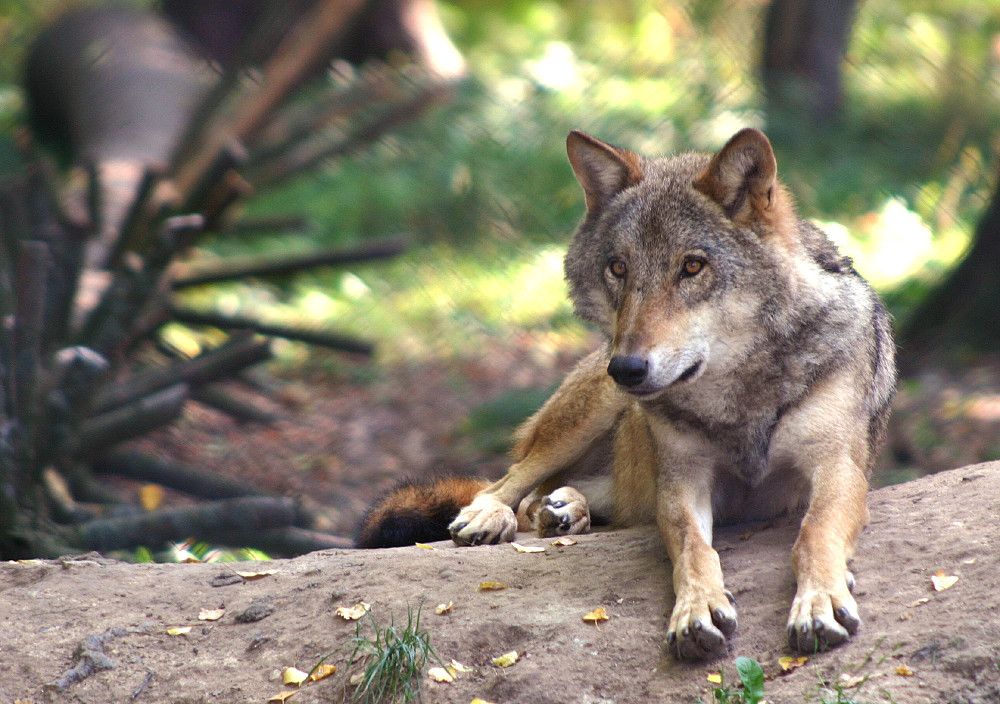|
Puszcza Białowieska- Objęty ochroną obszar Puszczy Białowieskiej, stanowiący ścisły rezerwat przyrody, podzielony obecnie granicą państwową, obejmuje 5 235 ha po stronie polskiej i 87 606 ha po białoruskiej. Tereny te pozostają w stanie naturalnym w stopniu niespotykanym w europejskiej strefie lasów umiarkowanych. Większość drzewostanu nigdy nie była odnawiana przez człowieka. Użytkowanie puszczy, regulowane królewskim prawem własności, ograniczało się do polowań, bartnictwa, wypasu, a niewielkie ilości drewna pozyskiwano jedynie w formie posuszu i wiatrołomów.
 |
| Foto: Tomasz Goliński |
Drzewostan puszczy reprezentuje wszystkie typy lasów niżowych. Występują one w zbiorowiskach leśnych i zaroślowych pozostających w ścisłym związku z glebami. są to: grądy, olsy, łęgi, bory mieszane, bór sosnowy, bór bagienny, mszar sosnowy. Stare drzewa liściaste sięgają wysokości 40 metrów, a świerki – nawet 50 metrów. Średnice pni kilkusetletnich dębów przekraczają 2 metry.
Zachowane w stanie naturalnym ekosystemy, duża ilość martwego drewna, cieki wodne i obszary bagienne umożliwiły przetrwanie pierwotnym gatunkom roślin, grzybów i zwierząt. Największym i najciekawszym zwierzęciem jest żubr, dla którego puszcza białowieska stała się głównym ośrodkiem restytucyjnym.
Współczesna historia ochrony puszczy sięga 1921 roku, w którym utworzono w niej rezerwat ścisły, przekształcony w 1937 roku w Białowieski Park Narodowy. Jest to najstarszy park tego typu w Polsce i jeden z pierwszych w Europie.
[ENGLISH]
The Białowieża Forest World Heritage site, on the border between Poland and Belarus, is an immense range of primary forest including both conifers and broadleaved trees covering a total area of 141,885 hectares. Situated on the watershed of the Baltic Sea and Black Sea, this transboundary property is exceptional for the opthe harbourunities it offers for biodiversity conservation. It is home to the largest population of the property’s iconic species, the European bison.
Bialowieza Forest is a large forest complex located on the border between Poland and Belarus. Thanks to several ages of protection the Forest had survived in its natural state to this day. The Bialowieza National Park, Poland, was inscribed on the World Heritage List in 1979 and extended to include Belovezhskaya Pushcha, Belarus, in 1992. A large extension of the property in 2014 results in a property of 141,885 ha with a buffer zone of 166,708 ha.
This property includes a complex of lowland forests that are characteristics of the Central European mixed forests terrestrial ecoregion. The area has exceptionally conservation significance due to the scale of its old growth forests, which include extensive undisturbed areas where natural processes are on-going. A consequence is the richness in dead wood, standing and on the ground, and consequently a high diversity of fungi and saproxylic invertebrates. The property protects a diverse and rich wildlife of which 59 mammal species, over 250 bird, 13 amphibian, 7 reptile and over 12,000 invertebrate species. The iconic symbol of the property is the European Bison: approximately 900 individuals in the whole property which make almost 25% of the total world’s population and over 30% of free-living animals.
Brak komentarzy:
Prześlij komentarz